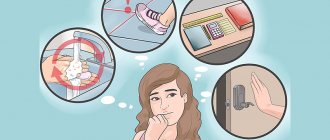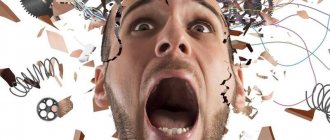Read more about conversion disorder
The definition of “conversion” refers to the exclusively psychological root cause of the phenomenon, which expresses itself not at the psychological level (for example, anxiety), but through physical symptoms reminiscent of signs of a nervous system disorder.
They usually appear from mental stimuli like conflicts. In most cases, the ability to swallow, walk, hear or see is impaired. According to most scientists, improvements can be observed in patients with the help of a timely and correct approach to treatment.
Photo by Jesper Aggergaard on Unsplash
There is a chance of paralysis of an arm or leg, or patients may lose their sense of touch. Doctors usually conduct quite a lot of medical examinations and tests to make sure that such manifestations are not a consequence of a physical illness.
Encouragement from a trusted loved one or the use of hypnosis may help. Conversion disorder, in most cases, appears between infancy and early adulthood, but the disorder can appear at any time.
Causes of conversion disorder
A significant cause of the disorder may be a nervous shock or a situation leading to the emergence of generative symptoms as a symbolic expression of past mental strife, or rather a problem when the patient shows high demands on other people, ceasing to intelligently weigh the circumstances around him.
The body creates a protective reaction under the guise of an imaginary illness in order to hide from tense situations. Torture of any kind has the potential to become a culprit that manifests conversion disorder in the adult population and young children.
32% of those who seek help tell a story of depression or sexual violence, the remaining 44% of patients have recently divorced or experienced a quarrel or the death of a loved one.
Grief for a deceased person
In the mature generation, conversion deviations have a chance of being associated with mobbing; for doctors, such a concept often means psychological torment during work. CD sometimes occurs in adults as a consequence of bad memories from childhood.
The characteristics of conversion disorder most often vary in severity, come and go, or may well be irreversible. The outcome is more favorable in younger children than in adolescents and adults. The concepts that are used because of the culprit of this disorder are called primary and secondary enhancement:
- The first option has to do with getting rid of anxiety and the connections of various unconscious desires.
- The 2nd incident refers to interference with everyday issues, removal from uncomfortable conditions, or high interest in other important signs.
A fairly common factor in the occurrence of conversion is the acquisition of any unconscious benefit from this state. Thus, a person makes attempts to manipulate people close to him, keeping them close, not without the help of a contrived illness.
CD can also be caused by downplaying one's own importance, an effort to “lock out” from unwanted problems, the need to make serious decisions, in other words, taking responsibility. All of the above arises against the background of experiences, and the brain “triggers” the disease.
Photo by Ian Keefe on Unsplash
Statistics show that this disorder is more common among women. Children and elderly subjects are no exception. The reason is that people are at their most emotionally vulnerable during this period of life.
Diagnosis F 44.2 Dissociative stupor
Dissociative stupor is diagnosed based on a marked reduction or absence of voluntary movements and normal responses to external stimuli such as light, noise, and touch, but examination and examination reveal no obvious physical cause. In addition, there is absolute evidence of a psychogenic cause in the form of recent stressful events or problems.
Excludes: organic catatonic disorder (F06.1) stupor:
- NOS (R40.1)
- catatonic (F20.2)
- depressed (F31-F33)
- manic (F30.2)
Possible symptoms
In most cases, the indicators of the disorder are not subject to the control of the patient’s consciousness, and often terrify him. Signs of the disease most often have an abrupt onset, but there are options for gradual deterioration.
- Pseudoparalysis . An infected patient is unable to use much of his own body or limbs. The position does not correspond in any way to typical models in anatomy and most often changes after the next examination.
- Pseudosensory syndrome . Patients often notice muteness or loss of sensation in different areas of the body. The loss of sensitivity, for the most part, corresponds to the patient's knowledge of simple anatomy, and not to the recognized properties of the patient's nervous system.
- Pseudo-seizures . These are some of the serious properties of CR, which are difficult to distinguish from their true derivatives. Up to 35% of those who seek help with pseudo-seizures suffer from epilepsy. Changes in the level of prolactin in the blood serum give the doctor the opportunity to distinguish this situation from epileptic seizures
- Pseudocoma . An equally difficult case, since a true coma will likely indicate a life-threatening abnormality, and the patient will have to receive the usual methods of treatment.
- Psychogenic mobility disorders . They can reproduce parkinsonism, dyskinesia, myoclonus, tremor and dystonia. For patients with possible psychogenic mobility disorder, doctors occasionally give placebo tablets.
Applicable treatment
Getting rid of the disease should be carried out on an outpatient basis. Often, CD can be cured with psychotherapy and appropriate medications. Only the treatment provided by the complex gives the patient the opportunity to forget about his illness. Medication therapy has an effect on the awakening of symptoms.
Patients diagnosed with CD can often benefit from a team spirit towards healing and harmony between different treatment methods.
In addition, there are no specific substances for the specific treatment of conversion disorder; medications are at times provided to patients to relieve anxiety and depression, which can be direct consequences of these types of complications.
Psychotherapy
Psychodynamic therapy is sometimes used in practice with children and schoolchildren. Cognitive behavioral methods also show good results. Home therapy is often recommended for young patients whose symptoms have a good chance of being associated with a family problem.
Family psychotherapy
Mass therapy with the introduction of social skills and survival strategies can be even more useful when trying to support schoolchildren.
Inpatient healing
Transport to a clinic is sometimes recommended for children with conversion disorders who have not responded to outpatient therapy. Inpatient treatment makes it possible to achieve a more absolute assessment of the permissible existing organic disorders, and to increase the degree of the patient’s mental state beyond the dysfunctional environment.
Other auxiliary methods of treatment
Other supportive treatments for conversion disorder include hypnosis, relaxation techniques, and visualization.
Diagnostics
Diagnosis of dissociative disorder includes a detailed medical history, history of the development of the disease, physical, neurological and psychiatric examinations, assessment of the clinical picture; studying the characteristics of the psychosocial environment, living conditions, the patient’s environment, stress factors, and the ability to cope with life’s stressful situations. This excludes physiological or neurological disorders that could lead to similar symptoms.
Differential diagnoses include separation anxiety disorder, generalized anxiety disorder, panic disorder, school phobia (in children), depression, and sometimes impending psychosis.
False-positive diagnoses (less than 5% of cases) are more often made in women, children with mental disorders, patients with unusual movement disorders or epilepsy.
Disease research and prevention
Observing complete healing of conversion disorder is considered very appropriate. Patients who have clearly decipherable moments of stress, a sharp onset of symptoms and a short break between onset and cure, get rid of the disease more quickly.
Patients hospitalized with this disease recover after two or more months. Twenty percent of them have a good chance of relapse within a year. Usually, this cannot lead to chronic problems, however, people with hysterical aphonia, paralysis or fictitious visual impairments have a greater opportunity for complete recovery than those with false seizures or psychogenic changes in movements.
The number of CR in adults decreases with increasing level of formal education, exclusively in the presence of leading facts about human psychiatry. Prevention of conversion disorder in young people depends on the most effective methods and the patient's family history.
Alternating personalities
Dissociative disorder combines several mental conditions:
- dissociative amnesia;
- dissociative fugue;
- depersonalization;
- dissociative identity disorder.
Together they form mixed conversion disorder. But it is the last option that is its usual characteristic. It is defined as the presence of several personalities in one person at once. They are given different names:
- subpersonalities;
- ego states;
- alter personalities.
Their number in one person is unlimited. Cases are described when the number of subpersonalities reached hundreds. They take turns replacing each other. Each subpersonality is a separate character, with its own gender, age, race, habits, and abilities. It’s as if they are different people who can even speak different languages, completely different from each other.
Not all alter personalities know about each other's existence. Some are more active and appear more often than others, others come less often. Ego states alternate with each other, which is why the disorder is also called alternating personality.
As already mentioned, all subpersonalities are very different. They are endowed with their own character, level of intelligence, and worldviews. Usually it happens like this: there is a main personality, the original one, living his own life. When experiencing strong, pronounced emotions (fear and horror, aggression, guilt and shame, excitement, as well as anger, rage, pain, disappointment), the main identity is replaced by one of the subpersonalities.
The brighter and more contradictory the emotions, the more difficult it is for a dissociated personality to cope with them without a defense mechanism. It is this form of disorder that is called obsessive. Each of the ego states takes possession of a person, and this becomes noticeable to others, because the new personality behaves completely differently.
It is believed that the formation of new alter states is the result of the action of a protective mechanism of the psyche called dissociation. Normally, this process is adaptive, protecting us from severe shocks and strong negative emotions. Thanks to dissociation, a person forgets about a traumatic event or perceives it as if it did not happen to him. Usually in such a situation people say: “It’s as if it didn’t happen to me.”
Dissociation occurs in response to severe stress, in those moments when self-control and self-control are required from the individual. By looking at the situation from the outside, he gets the opportunity to assess it more soberly, but the emotional side is distorted.
Dissociation helps cope with negative emotions. More often it turns on in people with a labile, that is, unstable psyche.
Such psychological defense is normally a short-term episode. Soon the person returns to his normal state. Pathology begins when dissociative defense seems to consume the personality, and the person loses control.
It is dissociation that underlies all dissociative disorders. People who use it as a defense mechanism are secretly called masters of self-hypnosis. Not everyone is able to make such a transformation in a stressful situation, moving from one hypostasis to another. This is a kind of talent - to put yourself into a hypnotic state on your own.
With the help of a defense mechanism, the brain of a person with DID tries to make life easier for him, so that someone else will experience the most difficult moments in his life for him.









